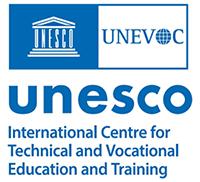
The UNESCO-UNEVOC International Centre: Who We Are | What We Do | Working With Us | Get in Touch
The UNEVOC Network: Learn About the Network | UNEVOC Network Directory
For Members: UNEVOC Centre Dashboard
Thematic Areas: Inclusion and Youth | Digital Transformation | Private Sector Engagement | SDGs and Greening TVET
Our Key Programmes & Projects: BILT: Bridging Innovation and Learning in TVET | Building TVET resilience | TVET Leadership Programme | WYSD: World Youth Skills Day
Past Activities: COVID-19 response | i-hubs project | TVET Global Forums | Virtual Conferences | YEM Knowledge Portal
Our Services & Resources: Publications | TVET Forum | TVET Country Profiles | TVETipedia Glossary | Innovative and Promising Practices | Toolkits for TVET Providers | Entrepreneurial Learning Guide
Events: Major TVET Events | UNEVOC Network News
Open and Distance Learning (ODL) is the provision of distance education opportunities in ways that seek to mitigate or remove barriers to access, such as finances, prior learning, age, social, work or family commitments, disability, incarceration or other such barriers. “Open” refers to a commitment that removes any unnecessary barriers to access learning. Distance education refers to teaching and learning that temporarily separates teacher and learner in time and/or place; uses multiple media for delivery of instruction; involves two-way communication and possibly occasional face-to-face meeting for tutorials and learner-learner interaction. Open learning is not the same as distance learning, but both are complementary and hence the two terms are often used together as open and distance learning.
The term open learning describes policies and practices that permit entry to learning with as few barriers as possible. The distance education system refers to the separation of the teacher and learner. Open learning is not the same as distance education but they are clearly complementary. Which is why we use the two terms together and the expression open and distance learning or ODL.
Open and Distance Learning (ODL) system is a system wherein teachers and learners need not necessarily be present either at same place or same time and is flexible in regard to modalities and timing of teaching and learning as also the admission criteria without compromising necessary quality considerations.
 Source:
Source:An approach to learning that focuses on freeing learners from constraints of time, space and place while offering flexible learning opportunities. It allows learners to work and combine family responsibilities with educational opportunities.
 Source:
Source:Learning which gives to the learner a degree of flexibility in the choice of topics, place, pace and/or method.
 Source:
Source: Cedefop, Terminology of European education and training policy. A selection of 100 key terms, 2008
Cedefop, Terminology of European education and training policy. A selection of 100 key terms, 2008
1. Open learning programmes are those the student can pursue in their own time and at their own pace.
2. An approach to learning which gives students flexibility and choice over what, when, at what pace, where, and how they learn, commonly using distance education and the facilities of educational technology.
 Source:
Source: Ministry of Labour, VTC, Department of statistics, National Centre of Human Resources, Glossary of selected terminology: The labour market and vocational education and training - Occupational safety and health. The Hashemite Kingdom of Jordan, 2005 - Not available online
Ministry of Labour, VTC, Department of statistics, National Centre of Human Resources, Glossary of selected terminology: The labour market and vocational education and training - Occupational safety and health. The Hashemite Kingdom of Jordan, 2005 - Not available online